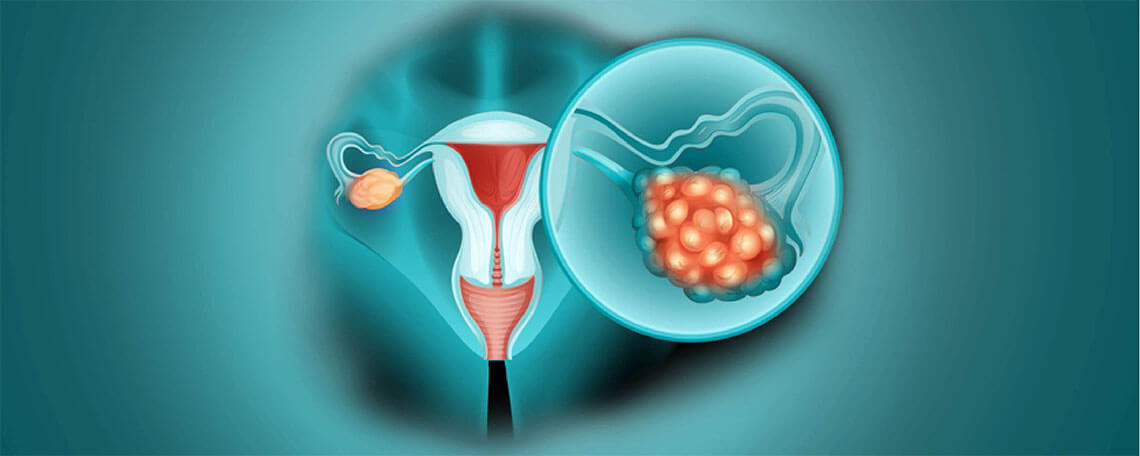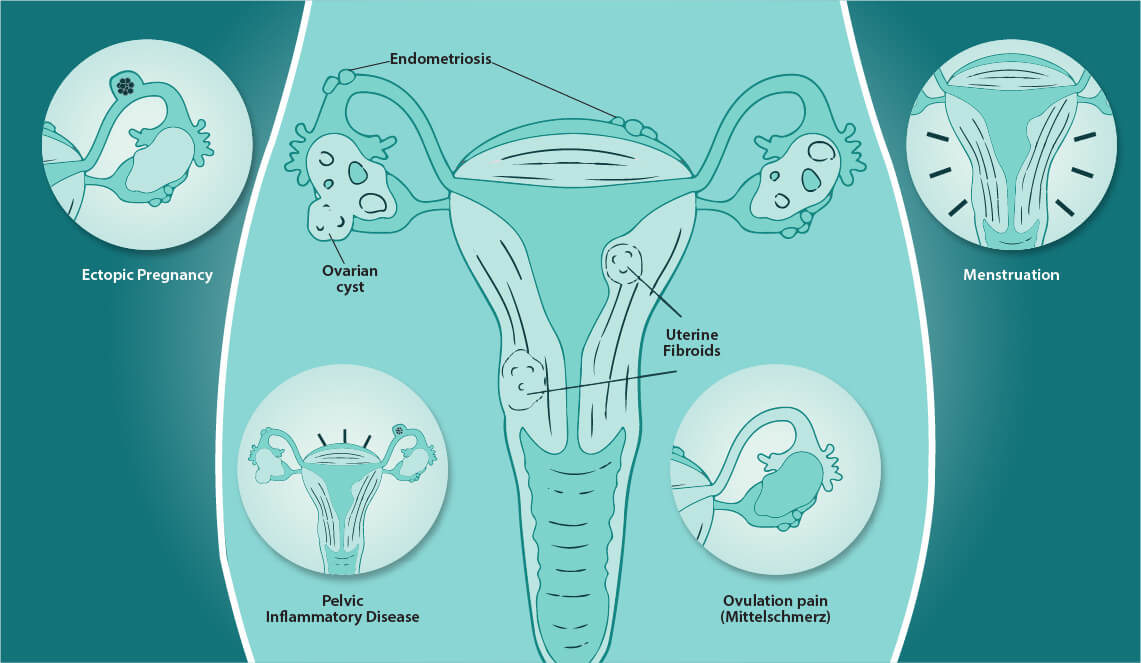About Ovarian Cancer
Cancer is a disease in which some of the body’s cells begin to divide without stopping, and spread into surrounding tissue. Ovarian cancers are a group of diseases that affect a woman’s ovaries.
The ovaries are a pair of organs in the female reproductive system. They are in the pelvis, one on each side of the uterus (the hollow, pear-shaped organ where a fetus grows). Each ovary is about the size and shape of an almond. The ovaries make eggs and female hormones. The fallopian tubes are a pair of tubes through which eggs travel from the ovaries to the uterus. The peritoneum is the membrane lining the cavity of the abdomen and covering the abdominal organs.
There are several types of ovarian cancer. While these diseases are all called “ovarian” because they affect the ovaries, they are actually unique in terms of their origin, how they look under a microscope, treatment and prognosis.

Ovarian tumors can be benign (noncancerous) or malignant (cancerous). Although abnormal, cells of benign tumors do not metastasize (spread to other parts of the body).
Additionally, ovarian cysts are different than ovarian tumors, and can be fairly common—ovarian cysts are fluid-filled while ovarian tumors are solid masses. Most ovarian cysts are not harmful, don’t cause symptoms and are not indicative of risk for future ovarian cancer, though some complex ovarian cysts may raise the risk.
Origins and Causes
While the causes of ovarian cancer are still unknown, scientists have some theories:
- Genetic errors may occur during one’s life known as acquired (somatic) gene mutations;
- A person can be born with gene mutations (hereditary gene mutations also known as germline mutations);
- Because being pregnant and taking birth control pills can lower risk of ovarian cancer, ovarian cancer may be related to ovulation;
- Though thought of as male hormones, androgens are found in women at lower levels, and may play a role in ovarian cancer;
- And because tubal litigation and hysterectomy seem to lower risk, others have hypothesized that external substances that can cause cancer may enter the body through the vagina and pass through the uterus and fallopian tubes to the ovaries.
Additionally, based on research, it is believed that many if not almost all high-grade serous ovarian cancers (the most common subtype) previously thought to originate in the ovaries actually arise from precursor lesions that begin in the fallopian tubes. PPC is thought to develop from cells in the lining of the abdomen and pelvis, called the peritoneum. These cells are very similar to cells on the surface of the ovaries, some researchers believe PPC may also begin in the cells lining the fallopian tubes. Other subtypes diagnosed as PPC share molecular similarities, as well, and therefore high-grade serous carcinomas that originate from the fallopian tube and elsewhere in the peritoneal cavity, together with most epithelial cancers, are staged and treated similarly. Since 2000, FTC and PPC have generally been included in ovarian cancer clinical trials. Regardless of the site of origin, the hallmark of these cancers is their early peritoneal spread or metastases.
